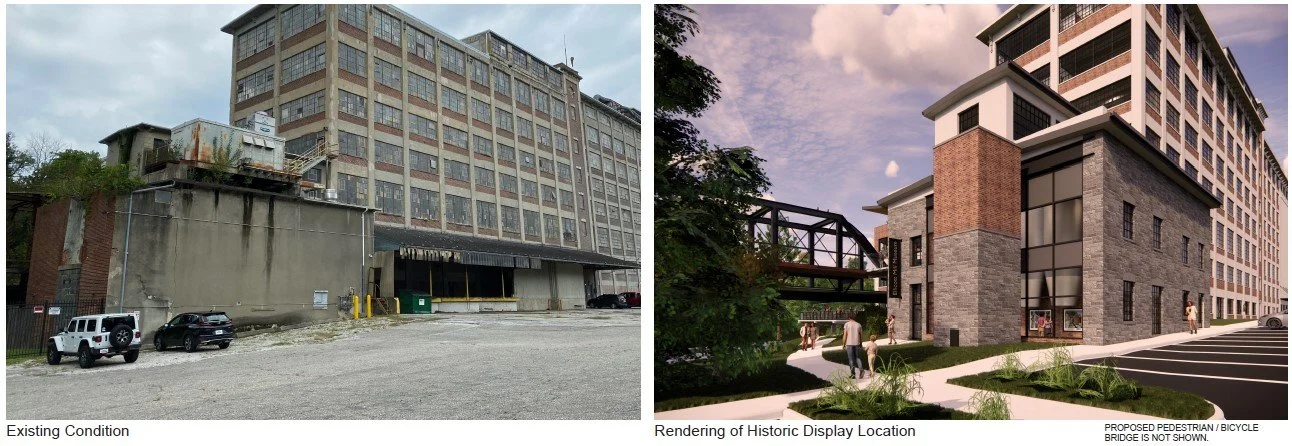
PUBLIC BENEFITS
The redevelopment of the Wilkins-Rogers property will benefit the public in numerous ways, and the Developer is also proposing additional, specific amenities.
-

Historic Preservation
We are preserving an historic building on the historic site located in the Ellicott Mills National Historic District. This property has been continuously used as a site for the production of flour for nearly 250 years. The Ellicott brothers opened the first merchant flour mill in the Baltimore region in 1774. The current mill building was built in 1916. The current adaptive re-use will preserve this history of milling along the Patapsco River.
-

Public Access to Patapsco River
As shown on plans within this booklet, we are prepared to provide limited points of access to the river and opportunities for sitting in a natural environment, such as seating on large flat boulders overlooking the river at strategic locations.
-

Trestle Railroad Bridge
This historic element from the mill and B & O Railroad history will be preserved and enhanced.
-

Historic Display
An old stone mill structure dating from the 19th century located at the downstream end of the mill structures on the site will be restored on the outside and the inside and be converted into a dedicated space for display of historical elements, and tools, etc. from the property.
-

Public Art
The nine cylindrical silos, 24’ in diameter and 90’ tall, are an important historical and architectural element of the mill complex. Historic preservation constraints limit what we can do with them. However, at a minimum we can turn them in to a form of public art or statement of arrival to Ellicott City. This could include “neon” lighting in artistic form, special signage, etc. We might consider running a design contest with design award for the winning design. In addition to the silos, a piece of public art is proposed at the main site entry.
-

Oella Garden
The current garden is located on our property and is operated under an informal arrangement with a local group. We are willing to formalize that arrangement with a permanent easement or equivalent. We will continue discussions with the community to explore interest in expanding the garden area beyond its current limits in the upstream direction. We are also open to funding some modest improvements to the garden area; for example, we might build a handrail and steps to the river since people fishing have already created a rough path to the river. In addition, we are prepared to provide a small annual maintenance fund for annual expenses for such things as mulching and new plantings.
-

Pedestrian Bridge
An elevated pedestrian/bicycle bridge over the parking lot will provide access from the proposed shared use path along Frederick Road to the waterfront area and walkway to the restaurant via a stairway wrapped around the historic chimney. This elevated bridge will be public, a minimum of 5’ in width, and the walking surface will be located above the 100-year flood elevation. The bridge will be an amenity to site residents and restaurant/retail patrons offering good views of the river, historic structure, and remainder of the site in addition to a way to access the site without traversing through the parking lot.
-

Historic Markers
As we have done at other projects, we are prepared to provide Historical Markers on the site to explain the history of this mill site and the structures that were constructed on the site over the past 247 years.